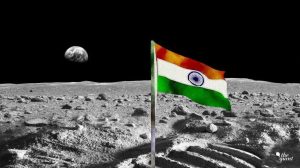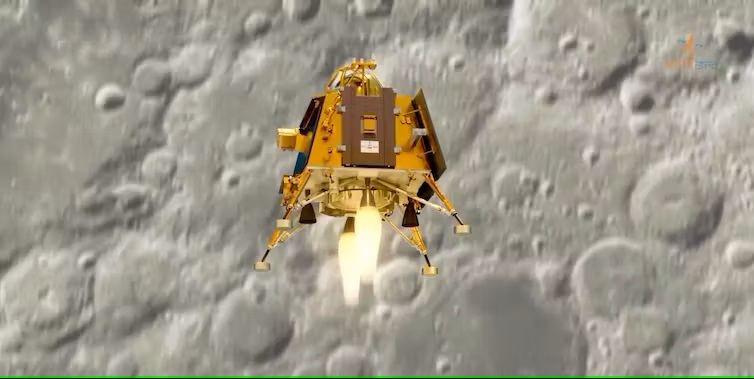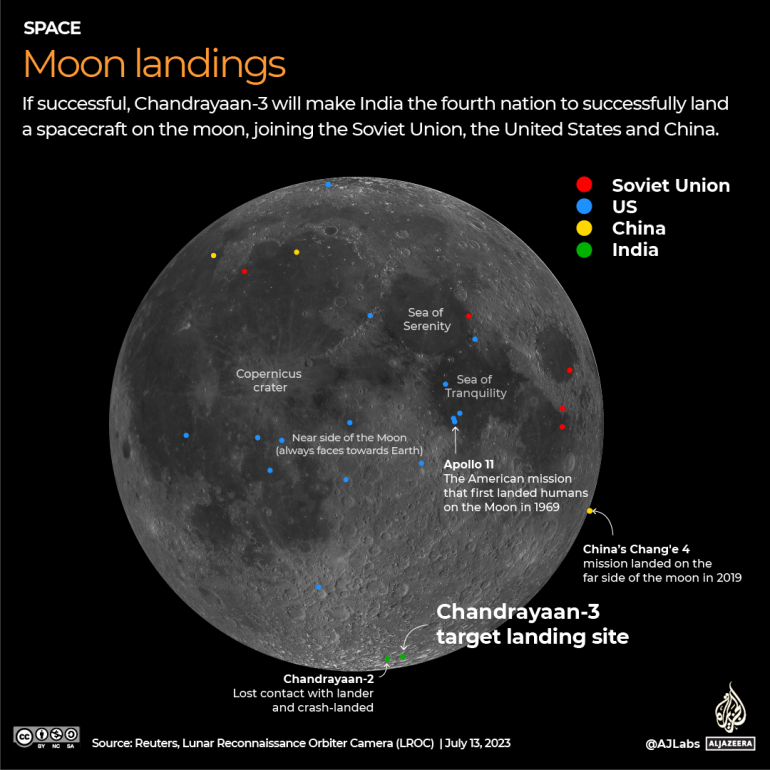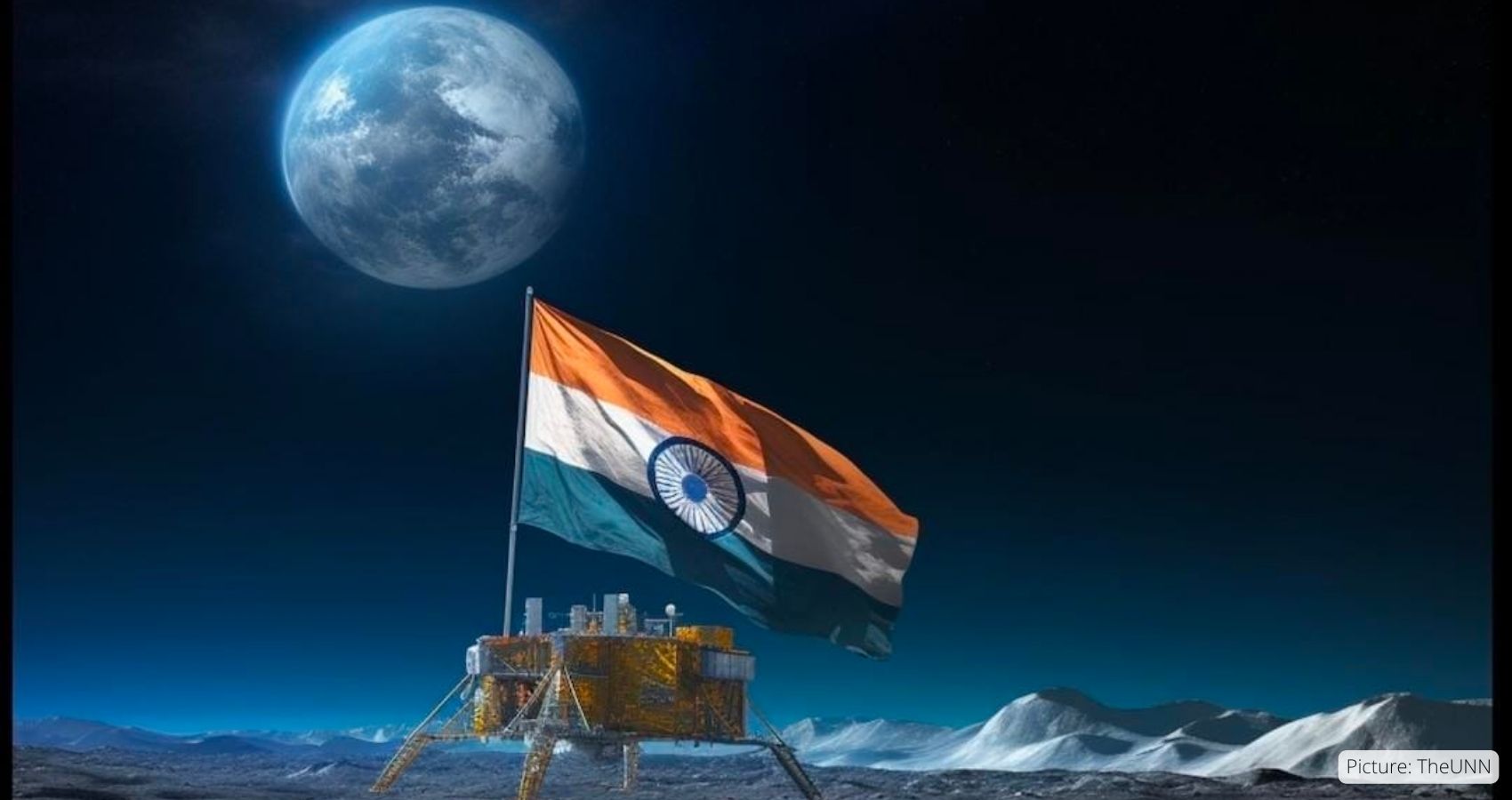India has landed its Chandrayaan-3 spacecraft on the moon, becoming only the fourth nation ever to accomplish such a feat. The mission could cement India’s status as a global superpower in space. Previously, only the United States, China and the former Soviet Union have completed soft landings on the lunar surface.
India is on the brink of a historic moment to land its Chandrayaan-3 spacecraft on the moon that could make it only the fourth nation ever to accomplish such a feat.
The Indian Space Research Organization confirmed that Chandrayaan-3, which is Sanskrit for “moon vehicle,” is on track and “smooth sailing is continuing.” The spacecraft is set to begin its final descent to the moon’s surface on Wednesday at 5:45 p.m. IST (8:15 a.m. ET). India’s space agency will livestream the landing attempt starting at 5:20 p.m. IST (7:50 a.m. ET) on Wednesday.
If successful, the mission could cement India’s status as a global superpower in space. Previously, only the United States, China and the former Soviet Union have completed soft landings on the lunar surface.
 Chandrayaan-3’s projected landing site is also closer to the moon’s south pole than any other spacecraft in history has ventured. The south pole region is considered an area of key scientific and strategic interest for spacefaring nations, as scientists believe the region to be home to water ice deposits.
Chandrayaan-3’s projected landing site is also closer to the moon’s south pole than any other spacecraft in history has ventured. The south pole region is considered an area of key scientific and strategic interest for spacefaring nations, as scientists believe the region to be home to water ice deposits.
The water, frozen in shadowy craters, could be converted into rocket fuel or even drinking water for future crewed missions.
India’s attempt to land its spacecraft near the lunar south pole comes just days after another nation’s failed attempt to do the same. Russia’s Luna 25 spacecraft crashed into the moon on August 19 after its engines misfired, ending the country’s first lunar landing attempt in 47 years.
As Chandrayaan-3 approaches the moon, its cameras are capturing photographs, including one taken on August 20 that India’s space agency shared Tuesday. The image offers a close-up of the moon’s dusty gray terrain.
Meanwhile, India’s space agency has unveiled the latest captivating images of the Moon as its third lunar expedition makes its approach towards the lesser-explored south pole. The imagery has been captured by Vikram, the lander of Chandrayaan-3, which commenced its final mission phase on Thursday.

Accompanied by a rover, Vikram is scheduled to make a landing near the lunar south pole on the 23rd of August. On Thursday, the lander successfully separated from the propulsion module, responsible for ferrying it to the Moon’s proximity. These monochromatic photographs provide intricate views of lunar rocks and craters, even featuring a snapshot of the propulsion module.
Chandrayaan-3 and Russia’s Luna-25 are currently at the forefront of the lunar race, both en route to the Moon’s southern pole with anticipated landing dates in the upcoming week. Notably, Luna-25, Russia’s initial lunar undertaking since 1976, when it was under the banner of the Soviet Union, initiated its journey last week.
The mission aims to etch history by executing a gentle touchdown on the 21st or 22nd of August, merely days prior to India’s own lunar touchdown. A successful Luna-25 mission could potentially place Chandrayaan-3 in the secondary position for reaching the south pole.

However, India will mark a significant milestone as only the fourth country to achieve a soft lunar landing, following the United States, the former Soviet Union, and China. The Indian Space Research Organisation (ISRO) shared on Friday that the lander module has begun its descent towards a lower lunar orbit. Chandrayaan-3, the third installment in India’s lunar exploration endeavor, is anticipated to build upon the triumphs of its predecessors.
This endeavor comes 13 years after India’s inaugural lunar mission in 2008, a pivotal mission that unveiled the presence of water molecules on the parched lunar terrain and validated the existence of lunar daytime atmosphere. In 2019, Chandrayaan-2 was launched, encompassing an orbiter, lander, and rover components. However, its success was only partial, as the orbiter continues its lunar observations, while the lander and rover failed to execute a soft landing and crashed upon touchdown.
ISRO’s leader, Sreedhara Panicker Somanath, conveyed that the agency meticulously analyzed the crash data and performed simulation exercises to rectify the issues in Chandrayaan-3. The mission, with a mass of 3,900kg and a budget of 6.1 billion rupees ($75 million), seeks to rectify the setbacks of its predecessor. The lander module itself weighs around 1,500kg, including the 26kg Pragyaan rover.
The south pole of the Moon remains largely uncharted, with the shadow-covered surface area exceeding that of the lunar north pole. Experts propose that these shadowed regions might harbor water resources. A primary objective shared by both Chandrayaan-3 and Luna-25 is to seek out water ice, a resource deemed crucial for potential lunar habitation. Moreover, water ice could serve as propellant for spacecraft voyaging to destinations such as Mars and beyond.
As India’s third lunar pursuit inches closer to its landing, Vikram’s awe-inspiring photographs provide a glimpse into the enigmatic lunar landscape. The concurrent missions of Chandrayaan-3 and Luna-25 signal a renewed race to unravel the mysteries of the Moon’s south pole. While Luna-25 aims to rekindle Russia’s lunar legacy, Chandrayaan-3 aspires to fortify India’s position in the realm of space exploration. Both missions are fueled by the hope of uncovering invaluable resources that could potentially pave the way for human settlement on the Moon and facilitate interplanetary travel.

